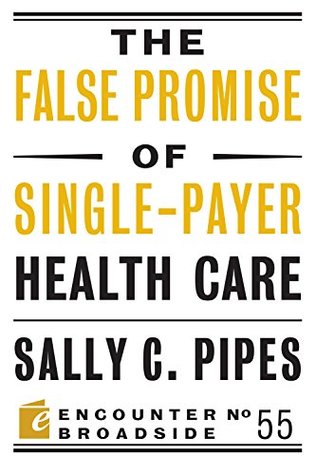Kindle Notes & Highlights
Let’s start with America’s first single-payer system, Medicare, which covers more than fifty-seven million people. Since its creation in 1965, the entitlement program has provided government-funded medical coverage to all Americans sixty-five and older. The original program consists of Part A, which covers hospital care with funds collected through a payroll tax on current workers, and Part B, which takes care of visits to doctors and is funded through a combination of premiums and general government revenue.
Like countless other government-run health insurance schemes, Medicare’s costs have exceeded its funding in all but two of its years in existence. It’s made up the difference by borrowing from other federal programs. An analysis coauthored by former Congressional Budget Office director Douglas Holtz-Eakin put the program’s 2016 cash shortfall at $349 billion.
America’s second single-payer system, Medicaid, offers even worse care. Created as part of the same 1965 package that gave Americans Medicare, the entitlement was originally intended to fund basic medical care for low-income patients. Unlike its counterpart, Medicaid is a joint federal-state initiative. States administer the program and receive at least one dollar in federal funding for every dollar they spend on it. Over the years, the program has grown into the largest provider of health coverage in the United States. Today, Medicaid covers one in five Americans—roughly seventy-four million
...more
Obamacare, which instructed states to enroll everyone earning less than 138 percent of the federal poverty level.
The American Hospital Association reports that hospitals received 90 cents for every dollar they spent treating Medicaid patients.
Consequently, a growing number of doctors are refusing to accept Medicaid patients.
When Medicaid beneficiaries can’t get an appointment with a doctor, they turn to the emergency room. Indeed, according to a June 2017 study published in the Annals of Emergency Medicine, ER visits increased in states that expanded Medicaid under Obamacare. A New England Journal of Medicine study of an expansion of Medicaid in Oregon that was similar to Obamacare’s yielded similar results. ER visits increased 40 percent in the fifteen months after the state expanded the program.
Several states have their own history with single-payer. Fortunately, every state-level single-payer initiative thus far has failed to launch.
Vermont abandoned its drive in December 2014 after getting a look at the price tag. Then-governor Peter Shumlin concluded that the proposed 11.5 percent payroll tax and 9.5 percent
Known as Amendment 69, the measure would have effectively ended private insurance in the state and replaced it with a publicly funded program dubbed ColoradoCare.
The annual cost to taxpayers? Thirty-six billion dollars—more than the state’s entire budget.
they rejected it by an 80-to-20 margin.
Still other state-level single-payer efforts remain alive. In June 2017, the California State senate passed SB 562, which would force all Californians—including those covered by Medicare and Medi-Cal, the state’s version of Medicaid—into a single, state-run health care system. The state senate’s Appropriations Committee estimated the annual cost of the bill at $400 billion—more than double California’s budget.
SINGLE-PAYER PLANS UNDER CONSIDERATION Single-payer has failed abroad and at home. Yet the call for single-payer from progressives has never been louder.
The first thing to understand about Sanders’s Medicare for All plan is that it’s not simply an expanded version of the existing Medicare program. It’s much bigger. In fact, no country has a government-run health care system as all-encompassing and generous as the one Sanders proposes.
The Sanders campaign claimed that Medicare for All would cost $14 trillion in its first ten years. The Urban Institute, a liberal think tank, calculated the cost at more than twice that—$32 trillion over ten years.
The administration of President Lyndon Johnson predicted in 1964 that Medicare would cost $12 billion in 1990; the actual cost was nine times that figure.
To make up the rest, he’s floated a litany of new taxes, including a 7.5 percent payroll tax on employers and a 4 percent income tax “premium” to be paid by households. A top tax bracket of 52 percent, higher taxes on investment income, and a “wealth tax” on the net worth of the top 0.1 percent are also on the table.
Medicare for All might be the most brazen attempt at single-payer, and the most unrealistic. But Sanders may also have set a marker that made a stealthier government takeover of our health care system seem downright reasonable by comparison. Consider the perennial push for a “public option.”
During the debate over Obamacare, many progressives argued for the creation of a government-run insurer to compete with private plans in the exchanges. The House’s version of what became Obamacare included the public option. The Senate’s, which eventually prevailed, did not. A government-run insurer would have the capacity to absorb essentially limitless losses. So it could underprice private insurers and eventually drive them out of the market. The public option would soon be the only option.
A yearlong wait for treatment from a Canadian specialist doesn’t constitute access.
“Access to a waiting list is not access to health care.”
To improve access, our nation must therefore focus on making care more affordable—without sacrificing the high quality that sets the American system apart.


